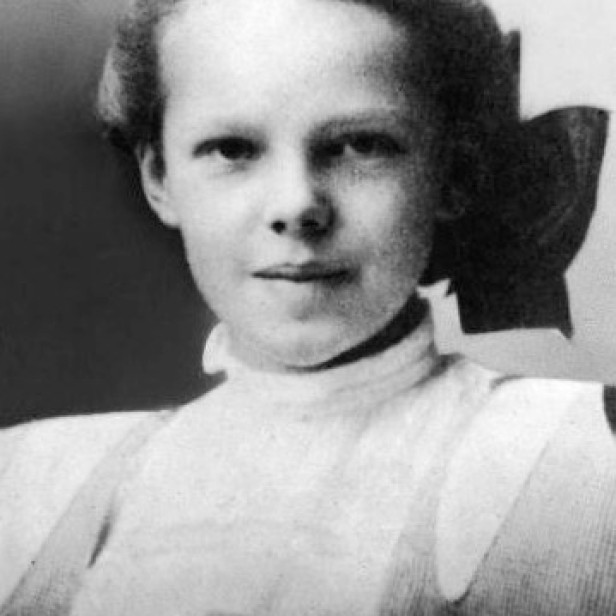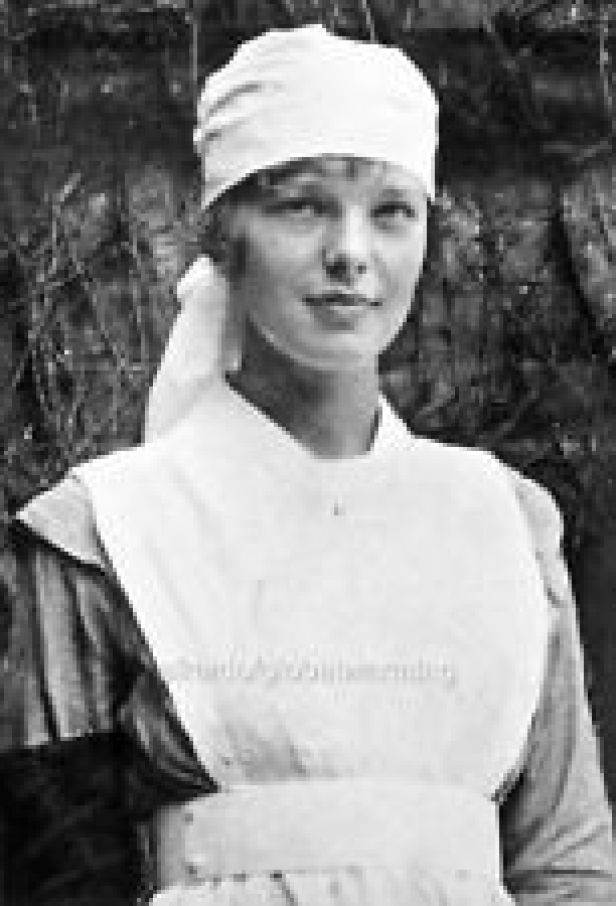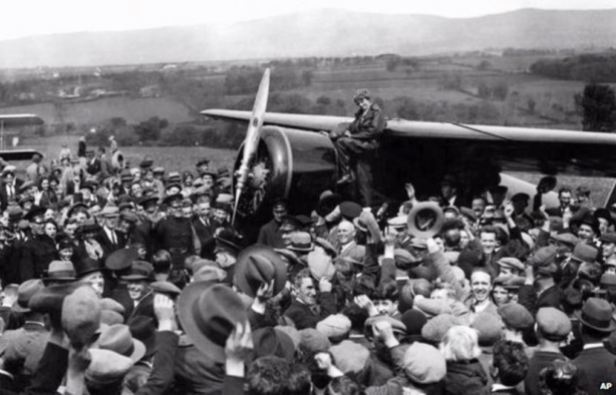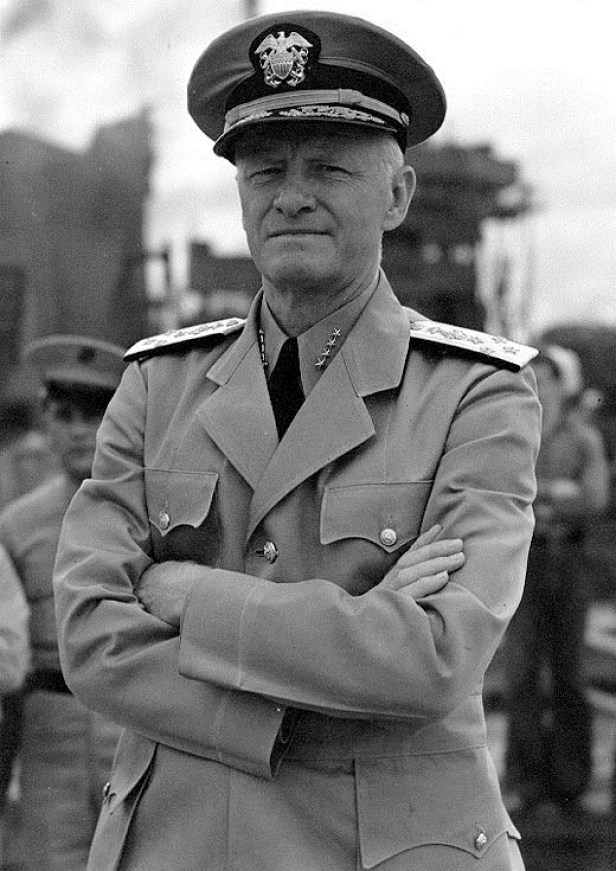Readers here are familiar with Thomas E. Devine’s 1987 classic, Eyewitness: The Amelia Earhart Incident, the former Army postal sergeant’s dramatic recollection of his three eyewitness encounters with the Earhart Electra on Saipan during the U.S invasion in summer 1944, the final time watching as the Earhart plane was torched, strafed and burned beyond recognition. Devine closed Eyewitness with an emotional plea to any and all with similar knowledge to step forward in support of his efforts to establish the truth:
. . . But now, after four decades of exhaustive study and analysis, I can unequivocally substantiate the presence of Earhart and Noonan on Saipan in 1937 as well as their deaths and subsequent interment in an unmarked grave in the southern outskirts of Garapan.
I am determined to return to Saipan and authenticate the remains of Amelia Earhart and Fred Noonan. I appeal to readers to join me in this effort by supplying any documents, foreign or domestic, which have bearing on the disappearance of Amelia Earhart, her navigator Frederick Noonan, or their Lockheed Electra. Should you merely hold memories in the shadows, I urge you to correspond with me now. The challenge is there and the burden of proof is ours to share.

Thomas E. Devine, whose involvement with events surrounding the discovery and destruction of Amelia Earhart’s Electra 10E as a 28-year-old Army postal sergeant on Saipan in July 1944 shaped the rest of his life. Devine’s 1987 classic, Eyewitness: The Amelia Earhart Incident, is among the most important books about the Earhart disappearance ever penned.
After his 1963 Saipan visit with Fred Goerner to search for the gravesite shown him by an Okinawan woman there in 1945, Devine would never return, for a variety of frustrating reasons — mainly the CNMI and Saipan governments’ concerted opposition to his plans — an outcome he never imagined. But as a result of his appeal in Eyewitness and elsewhere, 26 former GIs who served on Saipan contacted him and shared their experiences relative to Earhart and Noonan’s presence and deaths there, and this formed the basis for our 2002 book, With Our Own Eyes: Eyewitnesses to the Final Days of Amelia Earhart.
Robert E. Wallack, of Woodbridge, Conn., a short drive from Devine’s West Haven home, contacted him shortly after learning of Eyewitness’s publication. With his gregarious personality and riveting account of his discovery of Amelia Earhart’s briefcase in a blown safe on Saipan, he became the best known of all the GI witnesses. For much more on Wallack’s account, see my Sept. 28, 2015 post, Son Bill tells Robert E. Wallack’s amazing story.
Earskin J. Nabers, of Baldwyn, Mississippi, also had a Saipan story to tell, every bit as compelling and important as Wallack’s, but it almost never got out. The low-key Nabers was content to live a quiet life in rural Mississippi, and never sought attention, despite the fact that his story features more twists, turns and chapters than Wallack’s, and is the most fascinating and complex of all the Saipan GI witnesses.
Nabers was a 20-year-old code clerk in the H & S Communication Platoon of the 8th Marines during the invasion of Saipan. In October 1992, a friend showed him this notice placed by Devine in the spring edition of Follow Me, the official publication of the 2nd Marine Division Association, at Camp Lejeune, North Carolina:
I am seeking to contact any of the Marines, who, during the
invasion of Saipan, were placed on guard duty at Aslito Field,
to guard a padlocked hangar containing Amelia Earhart’s
airplane.
The hangar was not one of those located along the runway.
It was located near what may have been a Japanese administration
building, and an unfinished hangar at the tarmac, in the southwest
corner of the airfield.
Please contact: Thomas E. Devine,
81 Isadore St., West Haven, CT 06516
(Yes, I was there.) Thomas E. Devine

Marine Corp. Earskin J. Nabers at Camp Pendleton, Calif., in 1946, just before his discharge and return to his Baldwyn, Miss., home. As a code clerk in the communications center of the 8th Marine Regiment on Saipan in July 1944, Nabers decoded the top-secret message announcing the discovery of Amelia Earhart’s Electra in a hangar at Aslito Field. (Courtesy Sandra Nabers Sealy.)
The following is Nabers’ reply to Devine (handwritten), dated July 11, 1992:
Dear Thomas,
I want to apologize first for not writing earlier.
I will start from the first. I was a code clerk in the H & S Communications Plt. It was made up of wire section, radio section and message section. I was in the message section, all the messages came through our message center.
We were on mopping up duty on opposite end of Saipan from where we landed (the South end). The message came over our field radios. I decoded it and I was quite excited when I read the message. The message read (the best I remember) that Amelia Earhart’s plane had been found at Aslito Field, this was about the middle of the morning.
(We had to get Col. [Clarence R.] Wallace to sign all the messages that came through the message center.)
Shortly after we received the message, Hq. 8th moved back to bivouac area. I was dropped off at the Hangar for guard duty [at] the main road that went by west side of hangar. The road that went out to hangar, I was placed on the right side, just as it left the main road. And there was an Army man on the opposite side. He had arrived on the island just a few days before. I don’t remember his name but I think he was from Minnesota. I stayed on duty first day, that night, most of next day.
We were told not to let anyone go in. There was a jeep come by with some officers in it. They wanted to go in to see the plane. We told them our orders, they said what if we go anyway. We stepped in front of the Jeep, and told them that it would be in the best interest of all involved for them to turn around and leave. There was some other people come and checked us out, but they did not go in, they were just checking on security.
After I went back to my platoon there was another message come through that said something about destroying the plane. Myself and two more boys went back down to the airfield to see it destroyed. (the message give the time it was supposed to be destroyed)
The best I can recall the plane was pulled on the field by a jeep (driven by some Marines. I have got ahead of myself, the first time we went down there wasn’t anything done to plane it was the second day that the plane was pulled on the field but we went both times and we learned the second time from a message that come off the radio.

Saipan’s Aslito Airfield just after its capture by the 165th Regiment of the U.S. Army’s 27th Infantry Division on June 18, 1944. Standing hangars and Japanese aircraft, though damaged, belie skeptics’ claims that the Navy’s pre-invasion aerial bombardment leveled all buildings, and therefore Amelia Earhart’s Electra could not have been housed and discovered there. (U.S. Army photo.)
Picking up from the plane being pulled on the field. The plane was facing north after the plane was parked and jeep moved. A plane come over real low and the next pass he strafed the plane and it went up in a huge fireball. (We were sitting on the west side of the airfield about one hundred yard from plane. We were on higher ground. As far I remember, the ones that pulled the plane on the field and us guys from H & S 8th were the only ones there. We were not there officially, you know how Marines were, got to see what was going on.)
. . . This is a bit sketchy, but I hope it is worth something to you, as you know not everyone believes us. I told about it a few times & got the look as if to say that guy must have got shell shocked & had one guy tell me that can’t be so. I will stand by what I have said and I will place my hand on the Holy Book and repeat the whole thing over.
If ever I can be of any help to you in any way feel free to call on me. I guarantee that I will reply pronto.
Best Wishes,
Earskin J. Nabers
P.S. about not writing earlier, I had a problem to come up in the family that left me emotionally or I should say took the most of my time thinking about it. But thank God everything seems to be working out for the best. E.J.N
During an October 1992 phone conversation with me, Nabers, a receiving clerk in Baldwyn, repeated the details of his account. He added he was able to get a look into the padlocked hangar through a small opening between the doors. Nabers described a silver, twin-engine civilian plane. He said he couldn’t make out the registration marks from his vantage point. Neither could he discern its registration as he witnessed the Electra’s destruction because, “It was dark and we were too far away to read them.”
We’ll hear more from Earskin J. Nabers in future posts, and I promise you won’t be bored. For more on what we’ve already done about American military personnel on 1944-’45 Saipan and their experiences that revealed the presence and deaths of Amelia Earhart and Fred Noonan there, please see “Veterans recall seeing Earhart photos on Saipan” and “Kanna’s letter among first of GI Saipan witnesses,” my March 13, 2020 and Jan. 4, 2022 posts.
















![Fishing boat story 5 This story appeared at the top of page 1 in the July 13, 1937 edition of the Bethlehem (Pennsylvania)-Globe Times. “Vague and unconfirmed rumors that Amelia Earhart and Fred Noonan have been rescued by a Japanese fishing boat without a radio,” the report began, “and therefore unable to make any report, found no verification here today, but plunged Tokio [sic] into a fever of excitement.” The story was quickly squelched in Japan, and no follow-up was done. (Courtesy Woody Peard.)](https://earharttruth.files.wordpress.com/2016/01/fishing-boat-story-5.png?w=616&resize=616%2C352#038;h=352)









Mike, My friend down South:
Keep up the great work, enjoying it as usual, thank you ! !
Stuart, your friend up North
LikeLike
Great stuff, Mike..more corroboration to the real story of their fate..what could Nabers have possibly hoped to gain by making up a story like this..it would be fascinating to know who that other guard was on duty with him, as well who the people were who tried to gain entrance to the hangar..intelligence? representatives of the president sent to verify that in fact it was her plane? Probably not. if they were turned back without presenting any official presidential documentation..obviously, the plane is till there buried under the rubble of the present tarmac, and I assume no one has been given permission to dig for it..what a shame
LikeLike
Keep this up. Murder does not fade.
LikeLike
I know this sounds like nit-picking irritation, but I thought that Devine said he saw her plane flying. Nabers says the plane remained in the hangar while they guarded it. Both Nabers and Devine say they destroyed the plane at night, and if I remember right, Devine also had difficulty deciphering the numbers on the plane because of the darkness.
I don’t get why they both leave us with the same vagueness that it was dark and they couldn’t be 100% sure what plane was being destroyed. I believe DEvine copied down the plane number when he saw it flying. Then lost the scrap of paper. Presumably Nabers no longer had to guard that plane in the hangar which he had not positively identified there, either. He doesn’t say. It does give a little wiggle room for someone like me to wonder, “Would these accounts be admissible in a court of law as indisputable facts?” Beyond a reasonable doubt? The two accounts are not quite the same. There is no physical evidence, of course. I guess it’s up to us, the jury, to decide.
Sincerely,
David
LikeLike
Nabers story certainly is interesting. And brings up the question Why? I’m sure Nabers felt quite relieved when he finally found someone in 1992 he could tell this story to after the war. It is quite fantastic, so he must have found few people that believed him in the 40s after it happened while it was still fresh.
LikeLike
Greetings to All:
I’ve reread the chapters in TTAL pertaining to the Saipan witnesses — Thomas Devine, Robert Wallack, Earskin Nabers, et al. Nabers’ testimony is compelling, credible, and contains enough information to assemble a pretty good timeline. I’m not surprised that it took Nabers so long to come forward. Many of the WWII vets just didn’t talk about their experiences. And those who had access to classified material took their responsibilities seriously, and many eventually took their secrets to the grave. Thank goodness that Earskin J. Nabers understood the context and recognized the value of what he knew regarding AE and came forward. His honesty, forthrightness, and courage in bringing what he knew to light is commendable and has contributed much to the cause of Earhart Truth.
It would be interesting to walk back the message from Nabers’ hand as code clerk in the H&S Communications Platoon, 8th Marines on Saipan to it’s point of origination — presumably in Washington, DC. To know the headquarters, and the hands it passed through — to know who actually knew would be interesting indeed.
On another note, given that the subject of AE and FN on Saipan is so “taboo” in official and semi-official circles I’m really rather surprised that Thomas Devine’s notice, seeking “any of the Marines, who, during the invasion of Saipan, were placed on guard duty at Aslito Field, which contained Amelia Earhart’s plane,” was even published in the Second Marine Division Association’s Spring 1992 issue of “Follow Me.”
All best,
William
LikeLike
I’m not sure my post I am about to write is relevant, or that I could be characterized as a “troll.” I was a little troubled by this account in my last post about and I will try to be clear.
First, this account comes from 48 years after the fact. Given my present elderly state, I understand my memory of long ago events is not very trustworthy anymore. I’m just thinking why did this event become important so many years later and not at the time? Was it to sell a book? Mind you, I have nothing against anybody writing a book and trying to sell it.
OK, so Nabers is told that they were to guard Amelia Earhart’s plane. Who told him it was Amelia’s plane? He doesn’t say. Even if he did say, how would that person or officer have known? Could that officer be questioned? Well, no. Maybe some fellow marine said so. Isn’t this “hearsay” evidence?
Then here’s the part that puzzles me. Nabers says they watched the plane in the hangar like hawks. Then, at after sunset or around that time, the plane is towed out of the hangar and parked on the field “facing North” as if that mattered, Presumably it’s the plane in the hangar that “somebody” said was Amelia’s but Nabers admits he can’t see the numbers, evidently, in the falling darkness. Then they set it on fire and destroy it. But didn’t Devine say they saw it flying before they landed it and set it on fire although he too, can’t be sure of the numbers in the darkness to know for sure it was the plane he earlier saw flying. So Devine says it flew, but Nabers says it remained in the hangar while he guarded it. Who’s telling the accurate story? I know we’re relating a story here, it’s not a court of law, nobody is under oath, it’s just two guys telling similar though inconsistent stories. Even if it did happen the way Devine said, what is it supposed to mean?
Is my quibble helping to solve the AE mystery? I think not, but I just couldn’t help pointing out my doubts about this bizarre incident. I haven’t referred back to TAL for this, so I may have made mistakes.
Sincerely,
David
LikeLike